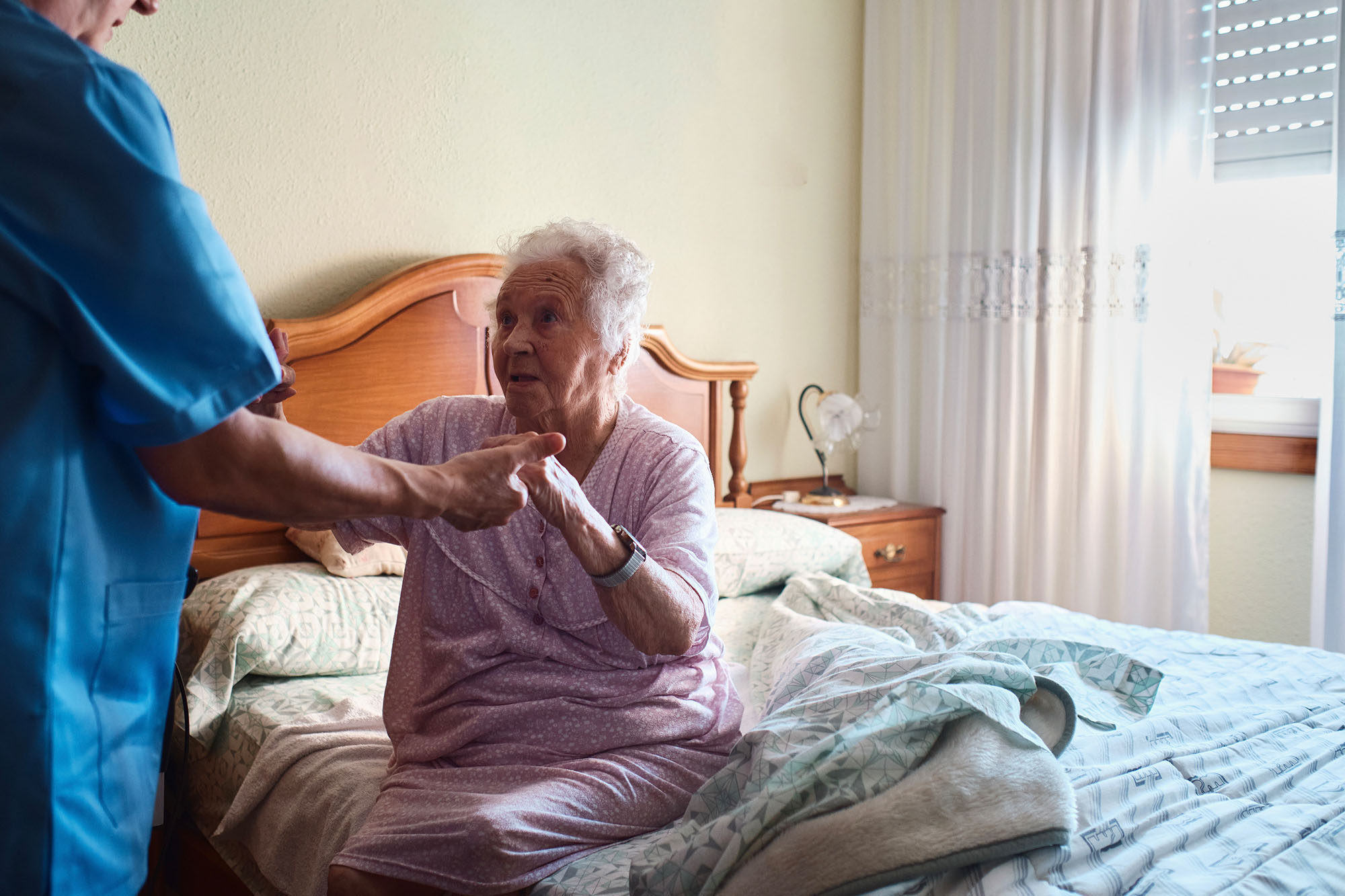Opportunity: Increase the number of clinicians with specialist and generalist palliative care training and credentials.
Potential stakeholder actions:
Despite an increase in specialty palliative care clinicians and the emergence of more pathways for pursuing a career or training in palliative care (PC), a pressing need remains for an ongoing commitment to workforce development to keep up with the growing need for PC.
The current gap in the supply of US doctors trained in specialty palliative care is only expected to widen over the next 20 years. By some estimates, the gap could be as large as 9,000 to 16,000 physicians by 2040. Even with favorable policy changes to encourage significant fellowship program growth, physician-to-patient ratios are not anticipated to significantly improve due to retirements from an aging workforce, burnout exits, and growth in the patient population. While it is unlikely that there will ever be enough specialty PC clinicians to meet the needs of all people with serious illness, efforts should be undertaken to minimize the gap.
Although data are not as accessible for nonphysicians, insights from qualitative lessons in the field suggest gaps in the workforce for other members of the interdisciplinary team such as nurses, social workers, and chaplains. Organizations also face challenges recruiting team members of color or with relevant language skills.
Workforce Definitions
Specialty palliative care. Specific area of medical practice that focuses on providing specialized care and support to people with serious illness. Specialty palliative care clinicians have specialized training and certification. Specialty palliative care is optimally delivered through a multidisciplinary team of trained doctors, nurses, social workers, and chaplains.
Generalist palliative care. Basic level of palliative care provided by health professionals who may not have specialized training or expertise in palliative care but have general skills in managing pain and symptoms, discussing prognosis and goals of care, and identifying unmet social needs of patients with serious illness. When necessary, generalist palliative care providers refer patients to specialty palliative care for more complex interventions. Generalist palliative care is also called primary palliative care or basic palliative care.
Increasing generalist palliative care (also known as “primary palliative care”) is another way to bridge the gap and ensure a minimum level of palliative care is available to anyone who would benefit. The National Consensus Project’s Clinical Practice Guidelines for Quality Palliative Care recommends that clinicians caring for people with serious illness should have “sufficient training and experience to complete palliative assessments and address common sources of suffering.” Generalist palliative care skills enable non-palliative care specialists and service lines (e.g., cardiology, emergency medicine, oncology) to administer basic palliative care comfortably and competently. As such, generalist palliative care has been gaining momentum as a supplemental approach to specialty palliative care.
Action: Expand and strengthen the workforce by increasing educational opportunities for specialty palliative care clinicians, particularly for clinicians of color.
Support policy measures that address the workforce shortage.
The Balanced Budget Act of 1997 placed a limit on the number of Medicare-supported residency slots at a time when hospice and palliative medicine was not yet formally recognized as a subspecialty by the American Board of Subspecialties. As a result, specialty training in hospice and palliative medicine has relatively few training slots per year, as these slots are funded through private philanthropy or institutional support, despite serving a considerable number of Medicare patients. California health policy and health care leaders can help address this issue by supporting national policy solutions to the workforce shortage. An example is the Palliative Care and Hospice Education and Training Act (PCHETA). PCHETA (PDF) has the potential to increase funding for PC teaching staff and fellowships in medical schools, as well as provide career awards and incentives for clinicians practicing PC.
Additional policy solutions that provide federal funding for specialty-level graduate education could also be pursued. The American Academy of Hospice and Palliative Medicine advocates for policy revisions (PDF) aimed at reshaping the nation’s financing system for graduate medical education to better align with workforce requirements. For example, they advocate for lifting the cap on fellowship position funding for high-need specialties such as hospice and palliative medicine. California health policy and health care leaders can play an important role in supporting relevant federal policies and implementing those policies at the state level.
Develop mid-career pathways.
Field leaders should establish flexible mid-career pathways in California, making it easier for clinicians to receive specialty training in palliative care. Some blueprints for innovation already exist. For example, a part-time, competency-based mid-career fellowship in palliative care is available at the University of Pennsylvania’s Perelman School of Medicine. Traditional fellowships are full-time and span 12 months, thus requiring clinicians to step away from current responsibilities. In contrast, the competency-based (not traditional time-based) Perelman model enables participants to maintain their faculty positions, salary, and benefits while engaging in part-time training leading to specialty certification. This type of flexible model could drive greater PC adoption among mid-career professionals. In addition, training on foundational palliative care to help prepare advanced practice nurses to subsequently pursue specialty certification in palliative care is available through the California State University Shiley Haynes Institute for Palliative Care (see “Resources from the Field” at the end of this section).
Provide support to diversify the palliative care physician workforce.
Supplementary financial incentives, beyond existing loan forgiveness programs, might make the first five years of practice more financially feasible to a more racially and socioeconomically diverse pool of doctors. These mechanisms could include additional housing stipends or unrestricted cash payments that could be tied to staying in California or in specific high-need areas, such as rural areas or safety-net hospitals. Furthermore, nonfinancial incentives should also be explored, including structured mentorship and protected time for research and practice innovation. Similarly, incentives should be offered to other types of clinicians (e.g., nurses, social workers) from communities of color to obtain training and certification in palliative care.
Action: Increase generalist palliative care skills for non-palliative care clinicians.
Increase implementation and uptake of generalist palliative care training and integration.
More avenues are available to pursue training in generalist palliative care than ever before. Various delivery mechanisms have been developed to include in-person, online synchronous, and online asynchronous training. Many programs also offer assistance in integrating generalist palliative care into clinical workflows. Although individual-level generalist palliative care training is valuable, implementation at an institutional level would have even greater leverage. As such, field leaders should advocate for more structural support of palliative care at health care delivery organizations, where training, workflow changes, and measurement can be integrated into one cohesive program. Building up institutional programs can also insulate the knowledge base and processes from individual staff turnover.
Build an evidence base for generalist palliative care.
The evidence base for generalist palliative care is still developing. California field leaders should find ways to contribute to this evidence base by building standards and measurement into generalist palliative care implementation. Strategic measurement that leverages data capture and reporting capabilities in an electronic health record can achieve this goal without unduly burdening busy providers.
Develop standards for generalist palliative care.
Field leaders should set minimum standards for generalist palliative care credentialing and identify and implement best practices in integrating generalist palliative care. The Center to Advance Palliative Care (CAPC) led an interdisciplinary expert consensus process to define the skill set for generalist palliative care by discipline, providing a strong foundation for advancing this work (see “Clinical Training Recommendations for All Clinicians Caring for Patients with Serious Illness” in the “Resources from the Field” box). The National Coalition for Hospice and Palliative Care offers recommendations that could serve as a basis for developing standards for integrating generalist palliative care capabilities into population-based models (see “Recommendations for Integrating Palliative Care Capabilities and Specialists into Population-Based Models” in the “Resources from the Field” section).
Resources from the Field
- Serious Illness Care: Tools for Clinicians and Health Systems (Ariadne Labs)
- California State University Shiley Haynes Institute for Palliative Care
- National Consensus Project Clinical Practice Guidelines for Quality Palliative Care, 4th ed. (National Coalition for Hospice and Palliative Care [NCHPC])
- Clinical Training Recommendations for All Clinicians Caring for Patients with Serious Illness (Center to Advance Palliative Care)
- End-of-Life Nursing Education Consortium
- Essential Skills and Supports for All Clinicians Treating Serious Illness: Building Generalist Palliative Care Capabilities Across Services and Settings (CHCF)
- Pediatric Palliative Care Nursing Education, Training, and Employment Initiative (George Mark Children’s House)
- Recommendations for Integrating Palliative Care Capabilities and Specialists into Population-Based Models (NCHPC)
- Essentials of Palliative Care (Stanford School of Medicine)
- Evidence-Based Communications Training (VitalTalk)
Actions for Stakeholders
Learn more about each action (PDF), including how all stakeholders can commit to this opportunity.
For full source information, see California’s Palliative Care Evolution — Opportunities to Further Advance Palliative Care in California (PDF).






